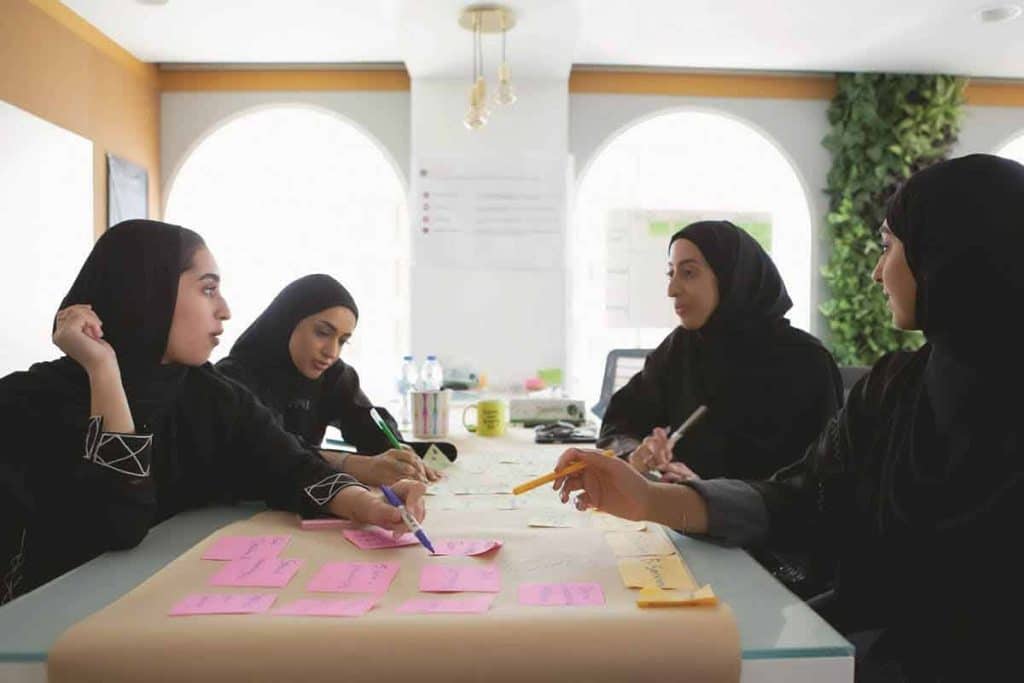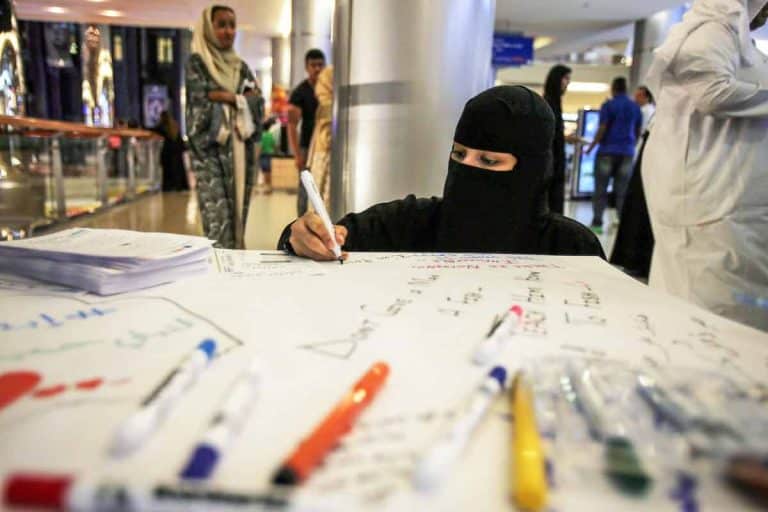Saudi Arabia has made remarkable strides in increasing female workforce participation, with the percentage of women in the labour force rising from 22 per cent in 2018 to an impressive 35.6 per cent by 2022, surpassing the targets set by Vision 2030. This growth is driven by the government’s focus on empowering women through numerous programmes and initiatives, paving the way for more women to enter diverse industries and assume leadership roles.
Over 40 initiatives have been launched by various entities to support women’s participation in the workforce. Among the most impactful have been the Wusool and Qurrah programmes:
Wusool provides transportation support for women, helping them commute to work and overcome mobility challenges, particularly in areas where public transport is limited. By offering subsidised rides, the programme has benefited over 100,000 women, empowering them to pursue careers without worrying about transportation barriers.
At the same time, Qurrah offers childcare subsidies, allowing women to balance family responsibilities with their professional aspirations. This initiative has been vital in encouraging mothers to remain in the workforce by reducing the burden of childcare costs and ensuring access to quality care for their children.
These programmes, alongside others, reflect the country’s commitment to creating an enabling environment for women to thrive in their careers while managing family commitments.
Increasing representation in key sectors
Despite these achievements, there are still sector-specific barriers to women’s full participation in certain industries. Women remain underrepresented in sectors that significantly contribute to national GDP, such as mining, construction, and manufacturing, where female representation is less than 10 per cent. In logistics, for example, female labour accounts for only 4 per cent of the total workforce, partly due to restrictive job categorisation and societal perceptions that limit women’s access to non-physical roles in these industries.
However, efforts are underway to address these disparities. There is a growing recognition that revising job classifications and opening up roles in HR, legal, and strategy within these industries could greatly enhance gender diversity and economic productivity. Companies are increasingly aware of the value that female talent brings and are actively exploring ways to create more inclusive workplaces.
Bridging regional disparities
While women in urban areas like Riyadh, Makkah, and the Eastern Province have better access to job opportunities, rural women face more significant challenges. Currently, 92 per cent of female employment is concentrated in these three economic hubs, leaving rural areas underrepresented. In some rural regions, female unemployment rates have reached as high as 45 per cent. Limited infrastructure, fewer job opportunities, and cultural restrictions on mobility contribute to these disparities.
To address these regional inequalities, targeted efforts are needed to improve access to jobs for women in these areas, including telecommuting options and localised training programmes. Expanding the reach of initiatives like Wusool to rural communities could further bridge the gap, helping more women join the workforce.
Overcoming cultural barriers and promoting STEM education
Cultural expectations also play a role in shaping women’s career choices. Despite making up 55 per cent of university graduates, women are often encouraged to prioritise family responsibilities over their careers, particularly in male-dominated sectors. This is especially evident in STEM fields, where female participation remains below 5 per cent.
To encourage more women to pursue careers in high-demand industries, the country can look to international models of success, such as the UK’s Tech She Can initiative, which inspires young girls to pursue careers in technology. Additionally, mentorship programmes like Canada’s women in STEM and leadership roles initiatives could serve as models for Saudi Arabia to increase female representation in these critical sectors.

The road ahead: Building on success
Saudi Arabia’s journey toward gender equality and workforce inclusivity has been encouraging, but there is still work to be done. Structural, regional, and cultural barriers continue to limit women’s full participation in some industries and regions. Yet, the country is on the right path, with policies and programmes in place to address these challenges.
Saudi companies are increasingly embracing gender diversity, and recognising that fostering an inclusive workplace not only supports women but also enhances overall business performance. It would be good to see firms introducing flexible working arrangements, which are critical to reducing the mid-career dropout rate among women, particularly those in their 40’s who often leave the workforce to manage family commitments.
Moreover, introducing return-ship programmes, which provide tailored training and mentorship, would help women re-enter the workforce after career breaks. These initiatives offer a lifeline for women who have taken time off for family reasons and are eager to regain their skills and confidence.
The introduction of gender parity reports for public and private companies, alongside incentives like tax breaks for those meeting targets, could further promote female leadership and reduce pay gaps. In addition, shared parental leave policies, similar to those in Sweden, would encourage shared caregiving responsibilities, enabling women to pursue their careers without facing a disproportionate burden of family duties.
As HRH Crown Prince Mohammed bin Salman has stated, “Women are half of society, and we want to give them the opportunity to lead and succeed.” With ongoing efforts, Saudi Arabia has the potential to lead the region in gender equality, creating a vibrant, diverse, and inclusive workforce that drives sustainable economic growth under Vision 2030.
By fostering opportunities for women and breaking down the barriers that hold them back, Saudi Arabia is not only advancing gender equality but also unlocking the full potential of its economy. The progress so far is a testament to the power of determination, and with continued focus, the future looks bright for women in the Saudi workforce.









